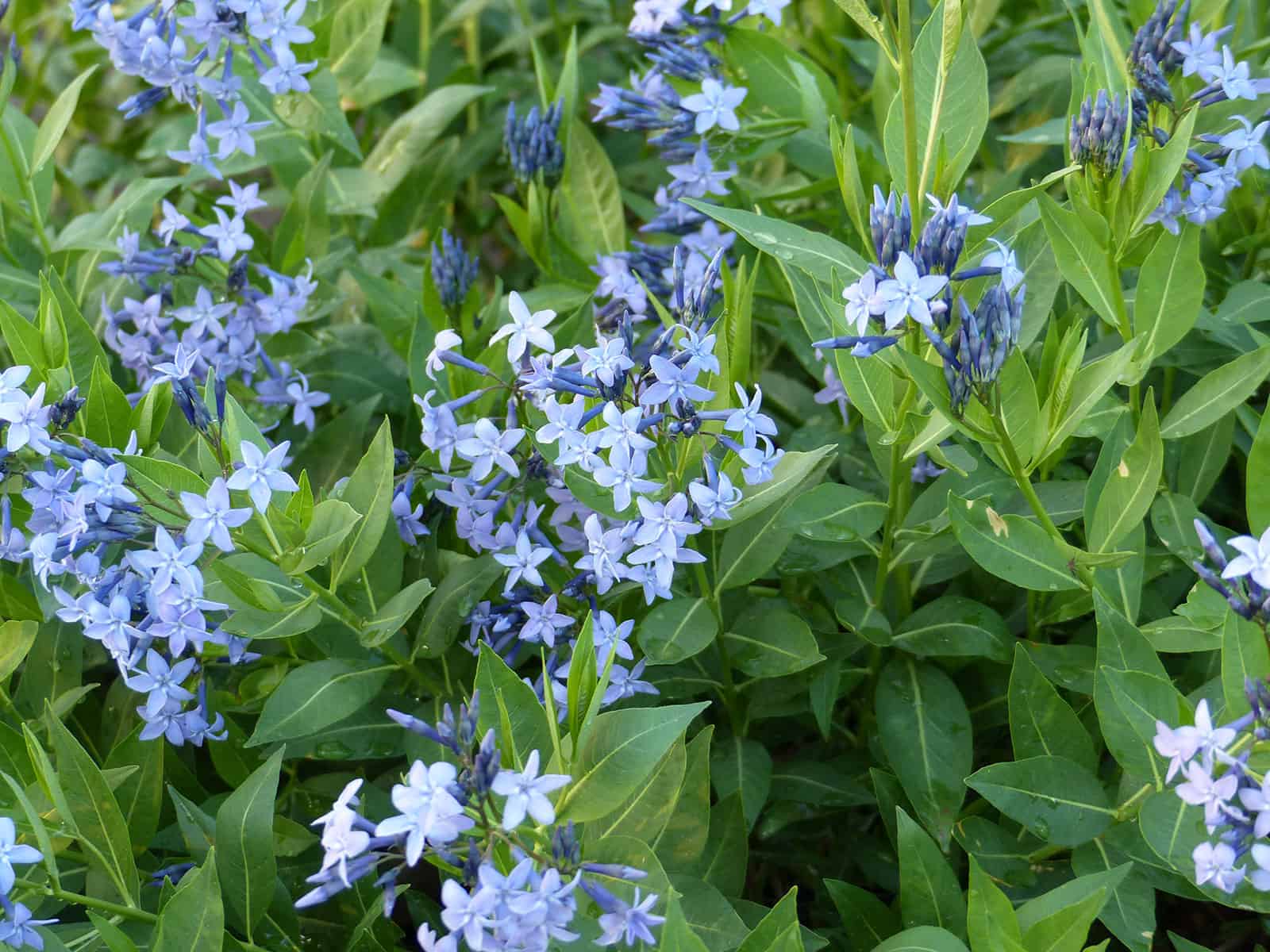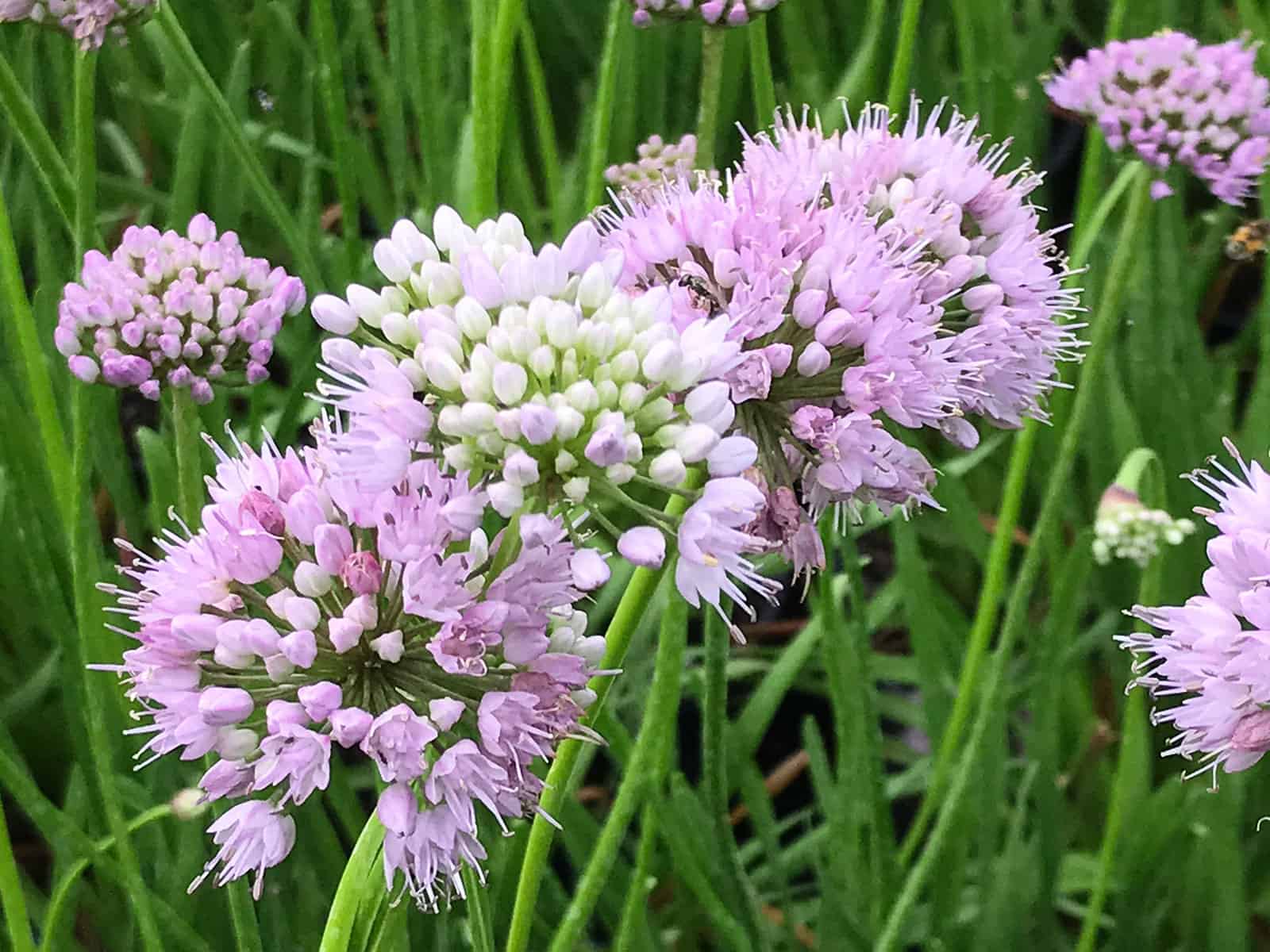This introduction is long-blooming and compact in habit. It forms a low mound of green willow-like leaves, bearing clusters of dark-blue buds that open into starry soft-blue flowers in early summer and last for several weeks. Plants are long-lived, idea for massing or growing near the front of the sunny border. Leaves turn buttery gold in the autumn. Easy and carefree. Flower colour is the deepest shade of blue yet found in any Amsonia species or selection. Discovered in a seedling block of Amsonia tabernaemontana at White Flower Farms, but suspected to be a hybrid.

Allium ‘Summer Beauty‘ (syn. A. angulosum ‘Summer Beauty‘). More often appreciated for its glossy deep green foliage in the spring and lilac flowers in the summer, A. ‘Summery Beauty’ can add tremendous color and texture to the winter garden. The straw-brown color and strong vertical nature of remnant flower stems topped with remains of the hemispherical flower umbel, now collapsed and pendulous, reflect what was once from the summer. A member of the Amaryllidaceae, this native of central Europe to northern Asia–from France and Italy to Siberia and Kazakhstan–is at home in the Midwestern perennial garden.
Allium ‘Summer Beauty‘ produced leaves up to 10 in. long with flowering stems of up to 20 in. tall. Plants work well as mass plantings, although individual plants can be slow to establish and take up to three years to begin spreading. A. ‘Summer Beauty‘ also works well in inter-planted combinations with numerous other full-sun perennial plants such as Sesleria autumnalis (prairie dropseed), Salvia nemorosa cultivars, and Stachys officinalis ‘Hummelo’ (betony). ‘Summer Beauty‘ is a sterile cultivar, so unwanted spread by seed-in is not a concern.
Roy Diblik of Northwind Perennial Farm developed A. ‘Summer Beauty‘ based on plant material collected from a Chicago area garden. The cultivar is now widely planted throughout the Midwest and Northeastern regions due, primarily, to its resiliency to diseases and pests and, additionally, to its great value as a source of pollen and nectar for honeybees, bumble bees, native bees, and butterflies.

